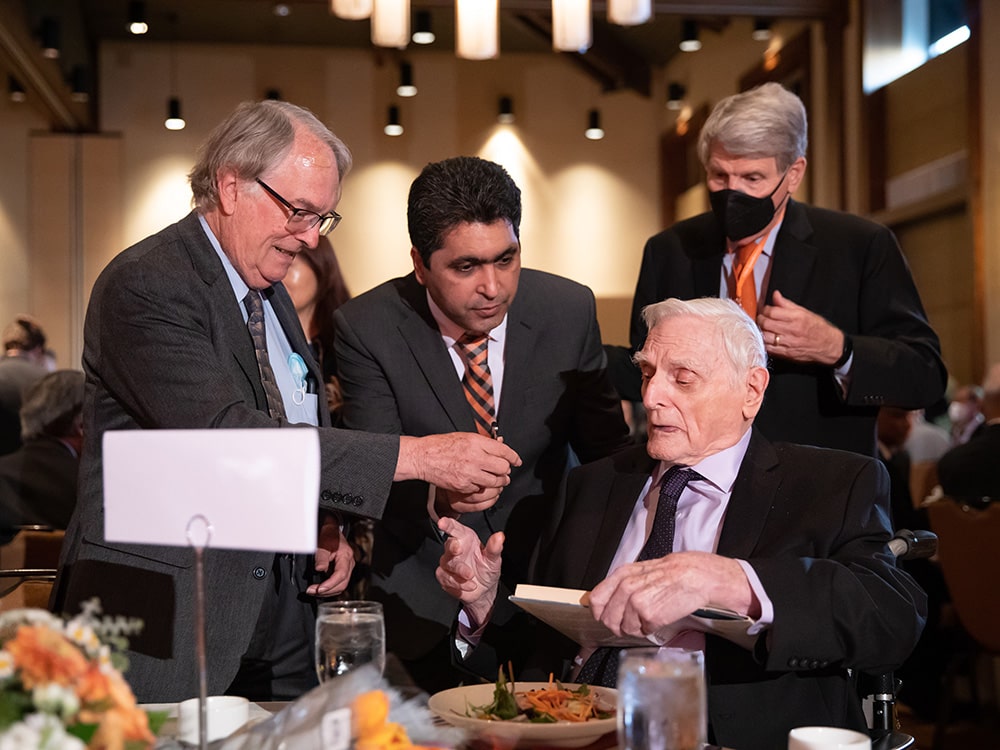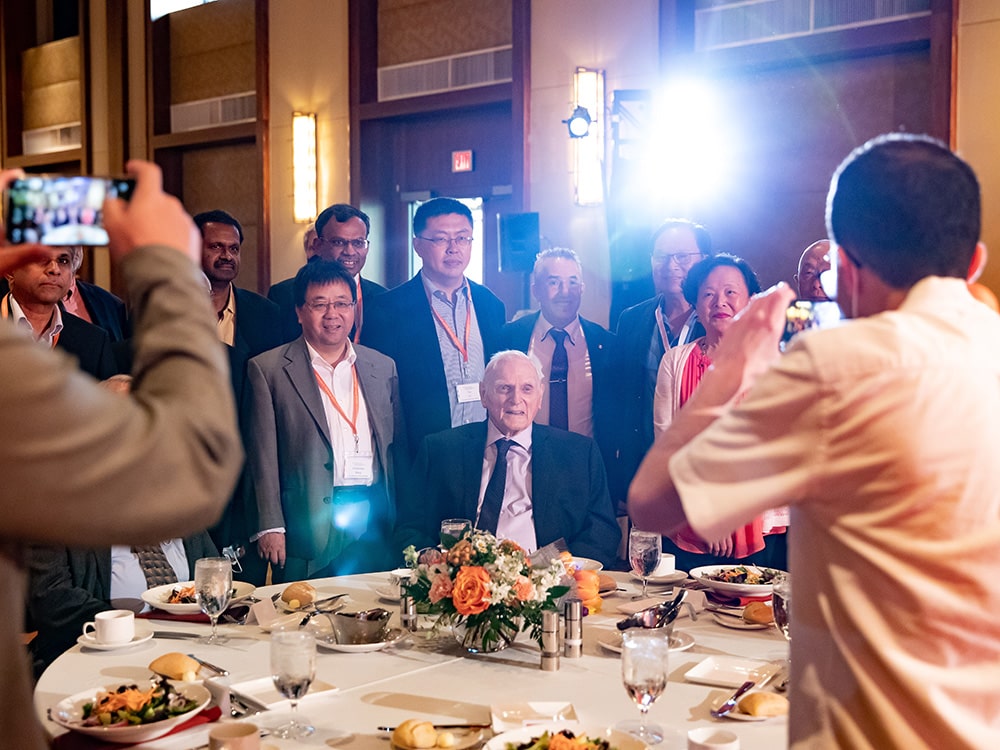John Goodenough has been a part of rarified air for decades now. And this week he joined another exclusive club.
The lithium-ion battery pioneer and Nobel Prize winner turned 100. To celebrate, battery leaders from around the globe, many of whom have been influenced by Goodenough's breakthroughs, gathered virtually and in person at a symposium at The University of Texas at Austin to share stories and discuss the next generation of battery research.
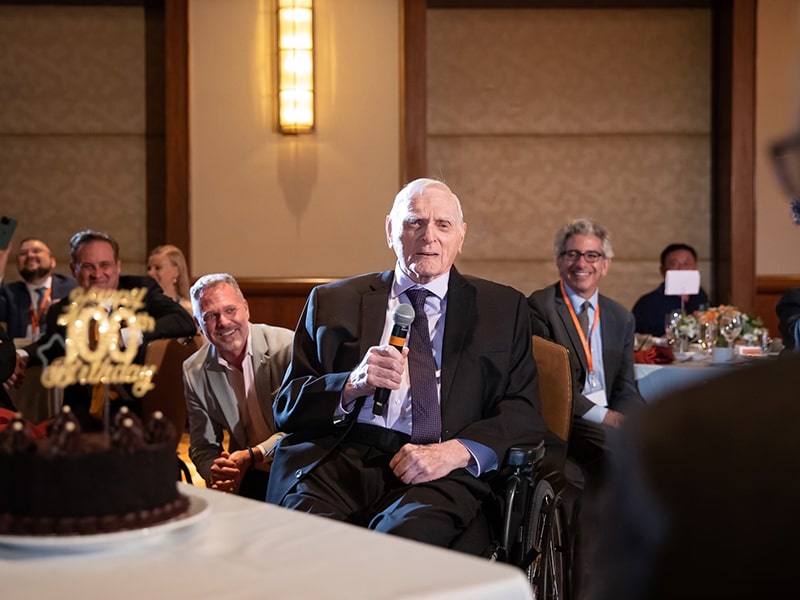
Goodenough identified and developed the critical materials that provided the high-energy density needed to power portable electronics, initiating the wireless revolution. Today, batteries incorporating Goodenough’s cathode materials are used worldwide for mobile phones, power tools, laptops, tablets and other wireless devices, as well as electric and hybrid vehicles.
"He is a symbol of ingenuity, strength and excellence in the Cockrell School," said Sharon Wood, executive vice president and provost at UT Austin and former dean of the Cockrell School of Engineering, at the event. "His mere presence inspires students and encourages our faculty to succeed. He has unequivocally and quite literally changed the world with his inventions. And he has the biggest laugh on campus, so you always know when you are in John's presence."
In 1979, Goodenough showed that by using lithium cobalt oxide as the cathode of a lithium-ion rechargeable battery, it would be possible to achieve a high density of stored energy with an anode other than metallic lithium. This discovery led to the development of carbon-rich materials that allow for the use of stable and manageable negative electrodes in lithium-ion batteries.
Goodenough began his career at the Massachusetts Institute of Technology’s Lincoln Laboratory in 1952, where he laid the groundwork for the development of random-access memory (RAM) for the digital computer. After leaving MIT, he became professor and head of the Inorganic Chemistry Laboratory at the University of Oxford. During this time, Goodenough made the lithium-ion discovery.
After retiring from Oxford in 1986, Goodenough joined UT Austin, where he serves as the Virginia H. Cockrell Centennial Chair of Engineering in the Cockrell School. He holds faculty positions in the Walker Department of Mechanical Engineering and the Department of Electrical and Computer Engineering.
Dating back to his time at MIT, Goodenough developed a reputation for working closely with others, Arumugam Manthiram, professor of mechanical engineering at UT and a 30-plus-year colleague of Goodenough, said during his remarks at the event. The distinguished group of attendees was a perfect example.
Leading battery experts who were influenced by Goodenough and worked directly with him talked about the history of batteries and where we go from here. Audience members, many of whom are now professors themselves after learning from Goodenough, engaged in spirited debates with presenters about their work on batteries.
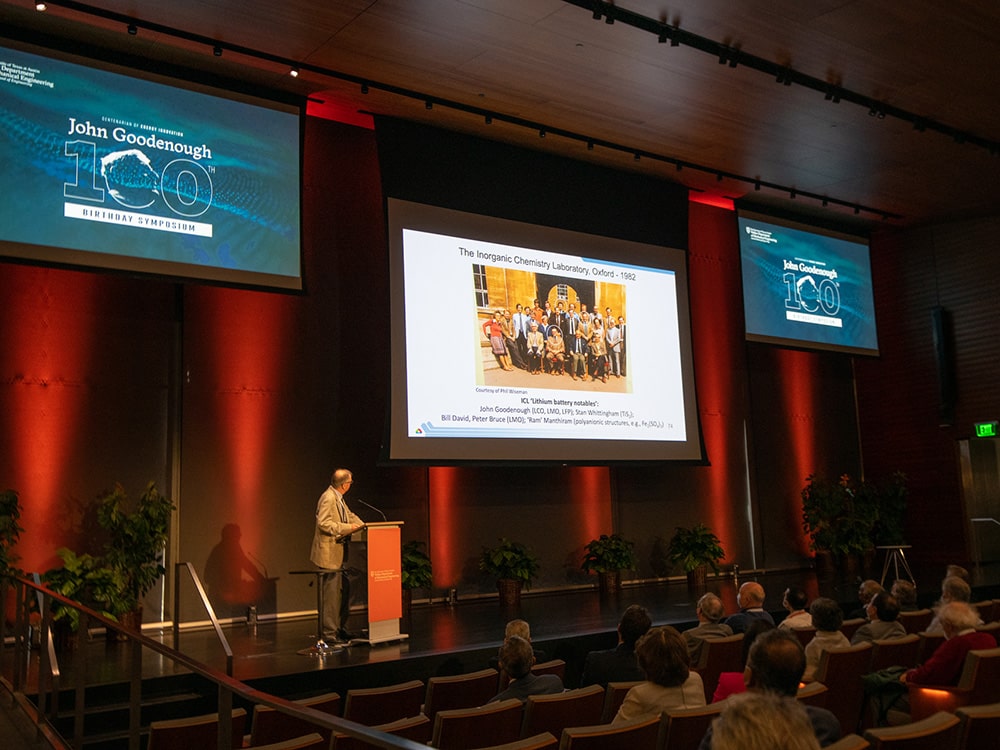
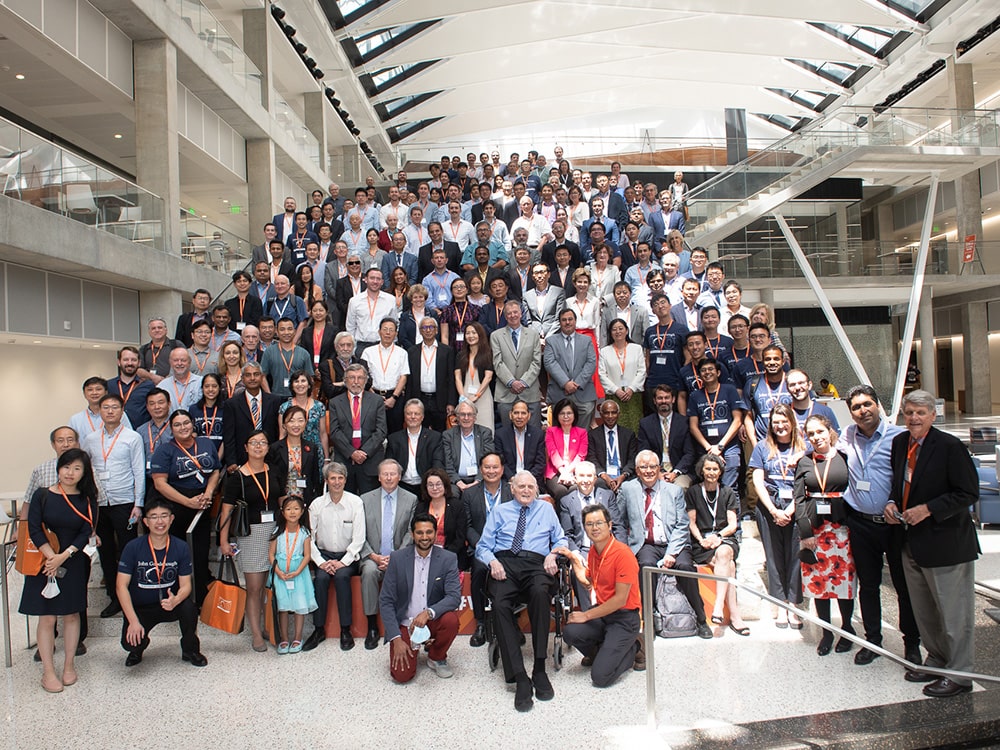
This communal aspect of his work speaks to Goodenough's personality, said Manthiram, who delivered the Nobel Lecture in Chemistry in 2019 on behalf of Goodenough. He can talk to anyone, about practically anything.
And it showed in his research and willingness to work with others. A physicist by training, Goodenough often worked with chemists and experts from other disciplines, Manthiram said.
"He recognized the importance of interdisciplinarity, before many others gave it much thought," Manthiram said.
Speakers touted Goodenough's longevity, with his research portfolio and academic tree stretching more than 70 years. Goodenough joined UT Austin at age 67, a time when most people have already hung it up, or at least started to wind down.
This ongoing ambition inspired Tien Duong, senior technical advisor at the U.S. Department of Energy, who manages DOE's Advanced Battery Materials Research Program and the Battery500 Consortium at the Vehicle Technologies Office. He was also inspired by Goodenough's advice he received at an event over a decade ago: to focus on simple but important things like children and family.
"Not only should John be admired for his technical accomplishments, but he's also a man to be admired for his humanity," Duong said.
Midway through the symposium, representatives from the Electrochemical Society presented Goodenough with a new award named for him. They also gave him a hard copy of the first-ever combined issue of the Journal of Solid State Science and Technology and Journal of The Electrochemical Society, an edition released in May that was solely dedicated to Goodenough. It includes more than 80 invited papers celebrating and honoring the life, legacy and contributions of Goodenough.
Goodenough, seated front and center in the packed Mulva Auditorium in the Cockrell School’s Engineering Education and Research Center, accepted the award, gave a wave and sent the battery luminaries, his former students and other attendees off to lunch with some sage advice: "All you have to do is work one step at a time."
Simple enough.
